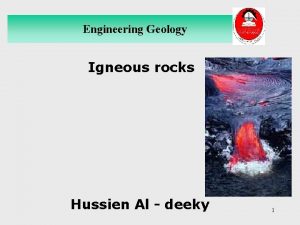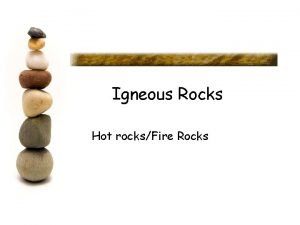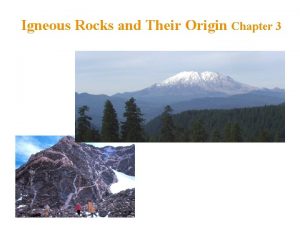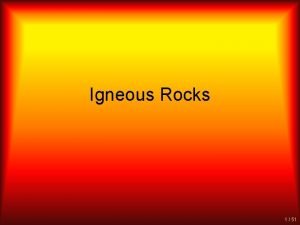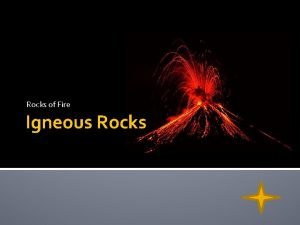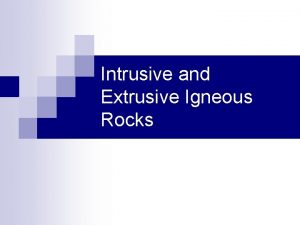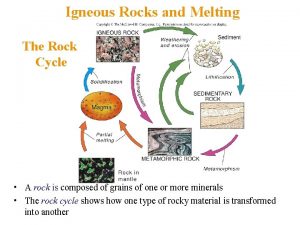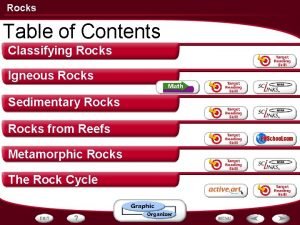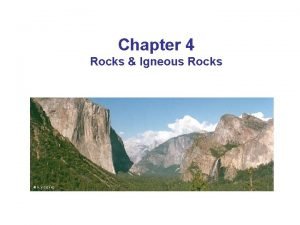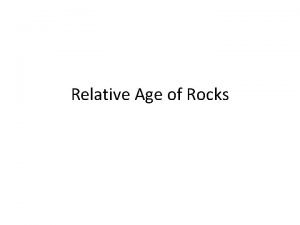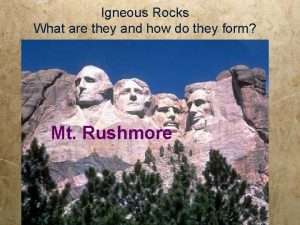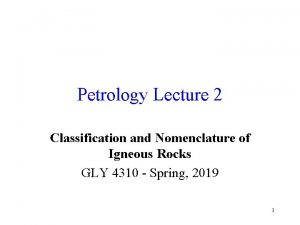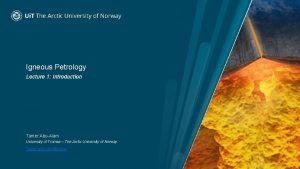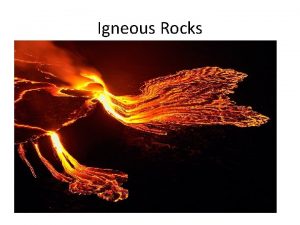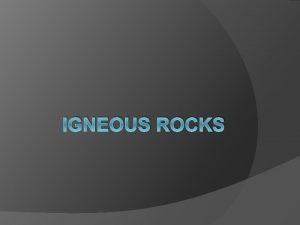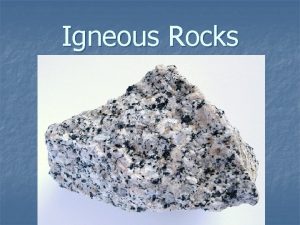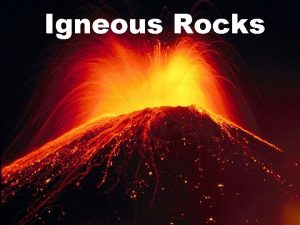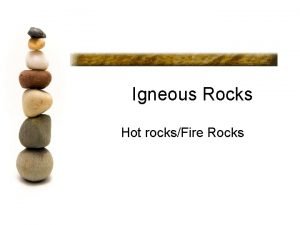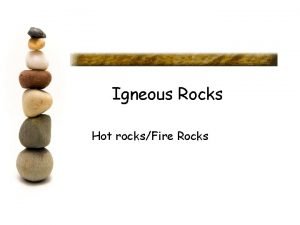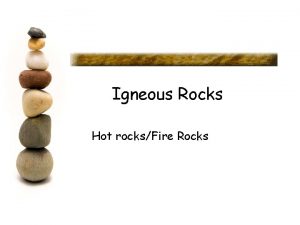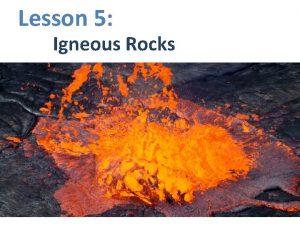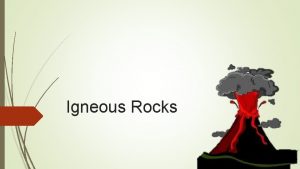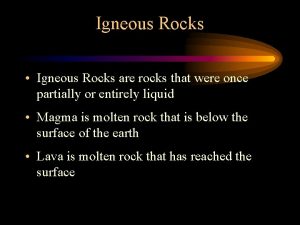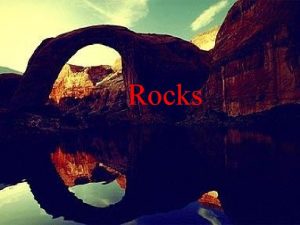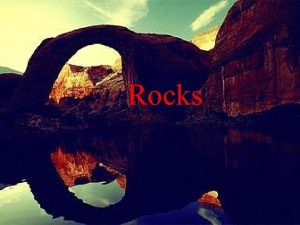Igneous Rocks How are igneous rocks formed How





















- Slides: 21

Igneous Rocks

How are igneous rocks formed?

How to Tell Igneous Rocks • The key concept about all igneous rocks is that they were once hot enough to melt. The following traits are all related to that: • • Because their mineral grains grew together tightly as the melt cooled, they are relatively strong rocks. • • They're made of primary minerals that are mostly black, white or gray. Any other colors they may have are pale. • • Their textures generally look like something that was baked in an oven. The even texture of coarse -grained granite is familiar from building stones or kitchen counters. Fine-grained lava may look like black bread (including gas bubbles) or dark peanut brittle (including larger crystals).

Name four places where igneous rocks form


Igneous rocks form at four main places on Earth: • • At divergent boundaries, like mid-ocean ridges, plates rift apart and form gaps that are filled by magma. • • Subduction zones occur whenever a dense oceanic plate is subducted underneath another oceanic or continental plate. Water from the descending oceanic crust lowers the melting point of the above mantle, forming magma that rises to the surface and forms volcanoes. • • At continental-continental convergent boundaries, large landmasses collide, thickening and heating the crust to melting. • • Hot spots, like Hawaii, form as the crust moves over a thermal plume rising from deep in the Earth. Hot spots form extrusive igneous rocks.

What determines crystal size?




What’s the difference between extrusive and intrusive igneous rocks?

form on or near the surface (small crystals) form below the surface (large crystals)

Characteristics used to classify igneous rocks

Characteristics used to classify igneous rocks

Characteristics used to classify igneous rocks

Characteristics used to classify igneous rocks

Characteristics used to classify igneous rocks

Characteristics used to classify igneous rocks contains Fe and Mg contains Al

Key Identifying Features of Igneous Rocks

usually black in color the grains have been melted and are now physically connect

Igneous Rocks as Resources
 Compaction and cementation
Compaction and cementation Igneous rock to metamorphic rock
Igneous rock to metamorphic rock Insidan region jh
Insidan region jh How igneous rocks are formed
How igneous rocks are formed How are igneous rocks formed
How are igneous rocks formed Intrusive igneous rocks crystal size
Intrusive igneous rocks crystal size How igneous rocks are formed
How igneous rocks are formed Phaneritic texture
Phaneritic texture Igneous rock defintion
Igneous rock defintion Intrusive vs extrusive igneous rocks
Intrusive vs extrusive igneous rocks Igneous rocks
Igneous rocks Intrusive rock definition
Intrusive rock definition Igneous rocks
Igneous rocks Igneous rocks
Igneous rocks Appearance of rocks
Appearance of rocks Sedimentary igneous rocks
Sedimentary igneous rocks Igneous rock
Igneous rock Relative age of rocks diagram
Relative age of rocks diagram Uses of igneous rocks
Uses of igneous rocks Aphanetic
Aphanetic Iugs classification of igneous rocks
Iugs classification of igneous rocks Rocks and minerals song
Rocks and minerals song



